
09/03/2020
Tourism and wildlife conservation organisations promote ecotourism as a conservation, development and educational tool. Your holiday in exotic landscapes, they argue, could make the world a better place. But as the demand for ecotourism and its associated CO2 emissions grow, is flying to distant places compatible with the international commitment to avert 1.5 or more of global heating?
Ecotourism is regarded as the fastest growing segment in the tourist industry. Commentators claim it represents between 7 and 20% of all international travel and is growing at an annual rate of 10-30%. Although the accuracy of these figures partly depends on how ecotourism is defined, the desire to see well preserved or aesthetically pleasing landscapes and their wildlife is undoubtedly on the rise, 1 underpinned by the positive image that has long accompanied ecotourism. Tourism in well-preserved areas, wildlife conservation organisations argue, can help local communities shift away from unsustainable resource use, generate income for development and conservation, and educate locals and tourists about the value of biodiversity. Today, however, tourists face contradictory messages from these conservation organisations on the one hand (keep flying to exotic wildernesses), and from climate scientists and activists on the other (fly less). Is our flying then part of the solution to the ecological and climate crises or part of the problem?
Here are ten key arguments of ecotourism advocates, each followed by an explanation of why we should be wary of these.
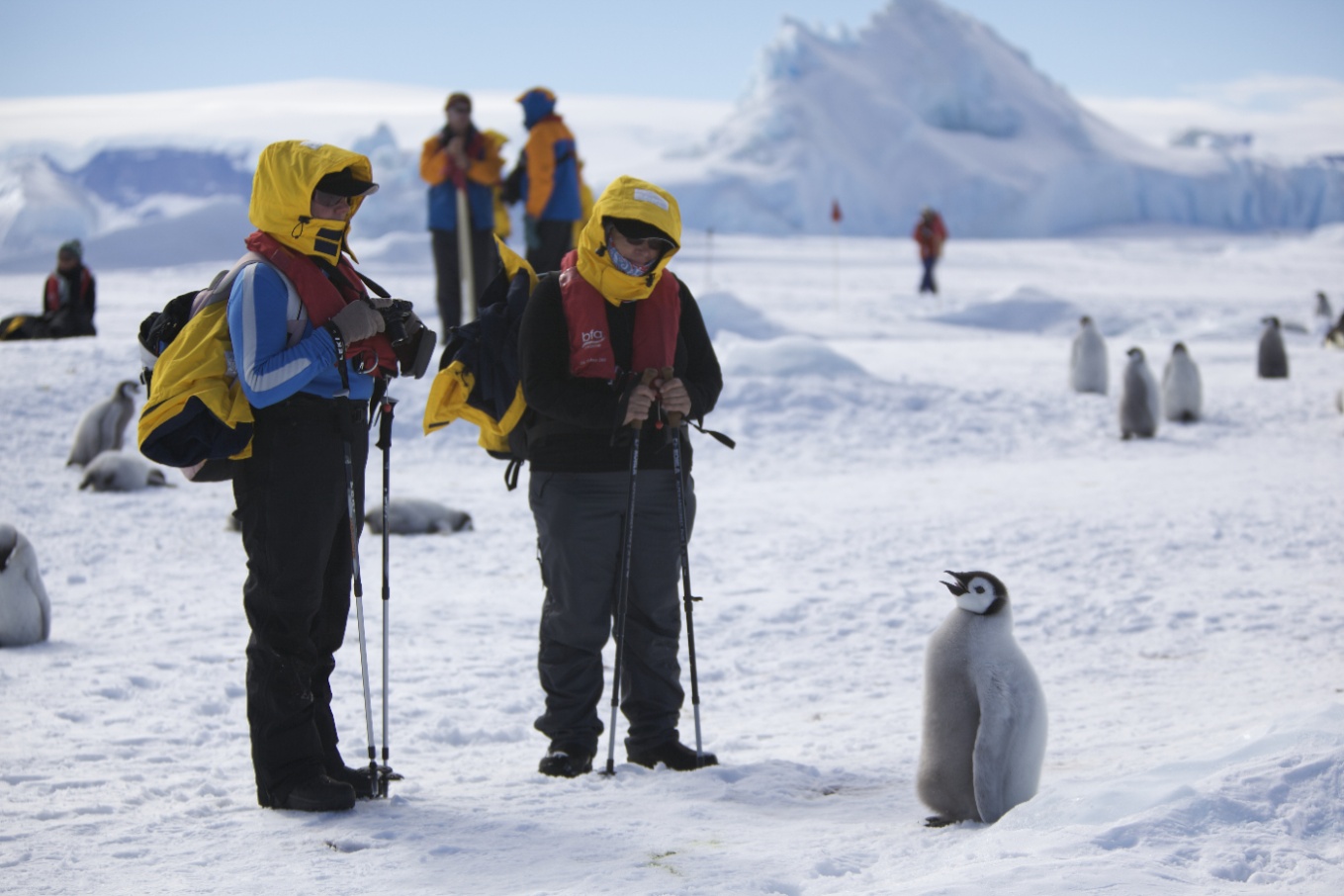
Image 1. Tourists in Antarctica. Photo by Ian Duffy.
What this argument forgets is that the conservation value of many holidays to ‘wild’ places is negligible or non-existent; that regional and national tourist boards promote tourism in natural areas primarily as a diversification strategy aimed at increasing revenues and numbers of tourists; that large numbers of tourists are often incompatible with the conservation of fragile places and sensitive species; and that few places have the institutional and financial capabilities to effectively control the growth of tourism and develop it in ways that are democratic and that primarily benefit wildlife and poor people. 2 These are good reasons to be agnostic about ecotourism as a conservation tool.
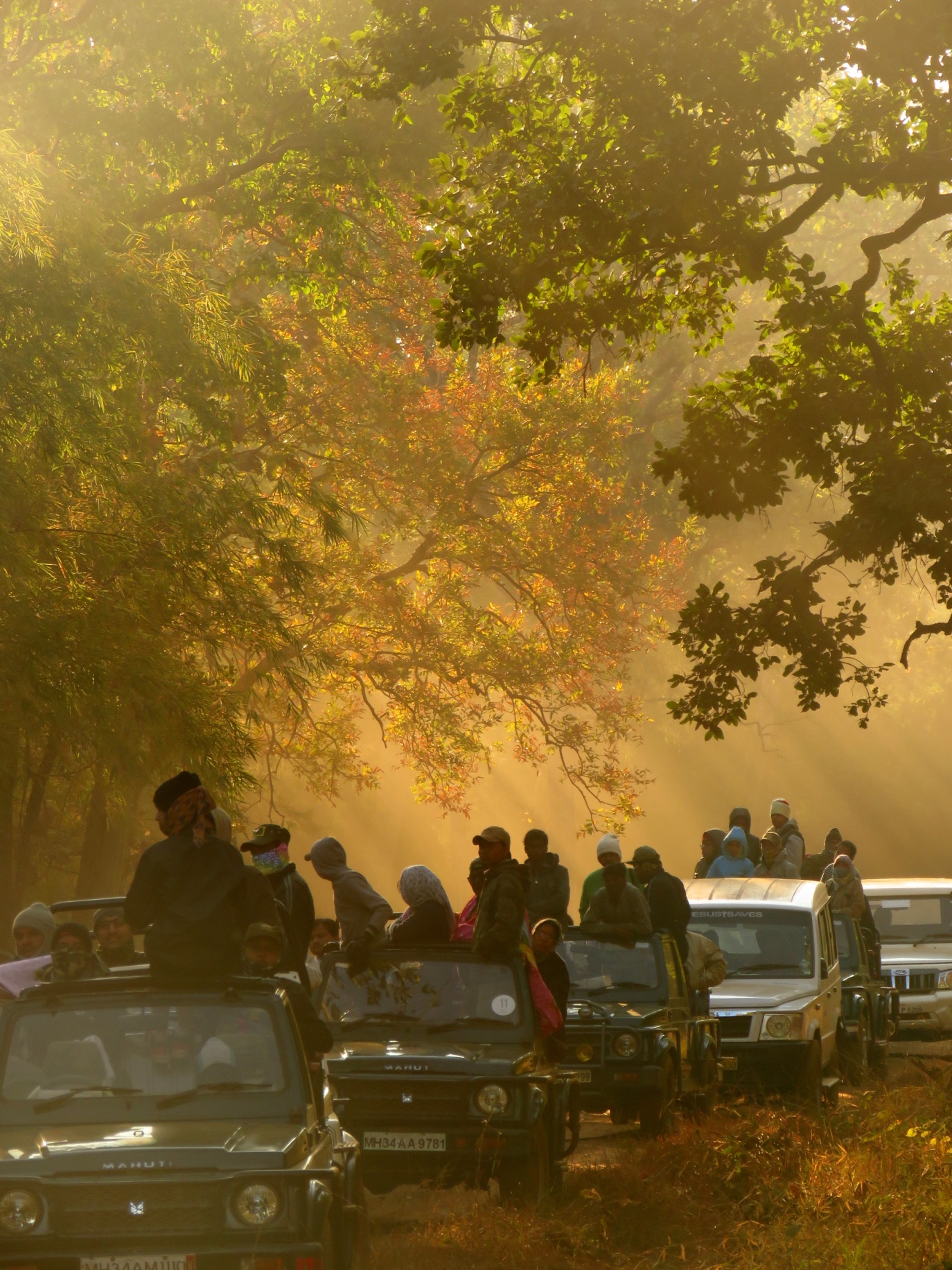
Image 2. Tourists waiting to catch a glimpse of a tiger in Tadova Andhari Nature Reserve in India. Photo by Namrata Shah.
In addition to this, tourism is responsible for 8% of global carbon emissions (this is without considering the non-CO2 warming effects from aviation which make it twice or three times as climate-relevant) 3 and global heating is already having an impact on biodiversity. Without urgent and drastic emission cuts a third of animal species could be lost by 2070 and around a quarter of all vertebrates, half of insects and 44% of plants could face severe range loss by 2100. 4
Tourism is an important source of income for many localities and countries. The climate crisis, however, is already increasing global inequality since it is in poor countries where the impact is greater. According to research published in April 2019, in most poor countries higher temperatures are more than 90% likely to have resulted in decreased economic output, compared to a world without global warming. In sub-Saharan African countries including Sudan, Burkina Faso and Niger climate change has driven down GDP per capita by more than 20% than would have been the case had climate change been absent. 5 A related study published in 2015 estimated that the average income in the 40% poorest countries will decline by 75% by 2100 compared to a world without warming. 6 The economic impact of tourism in certain localities pales in comparison to the growth of poverty in tropical regions associated with rising temperatures. 7
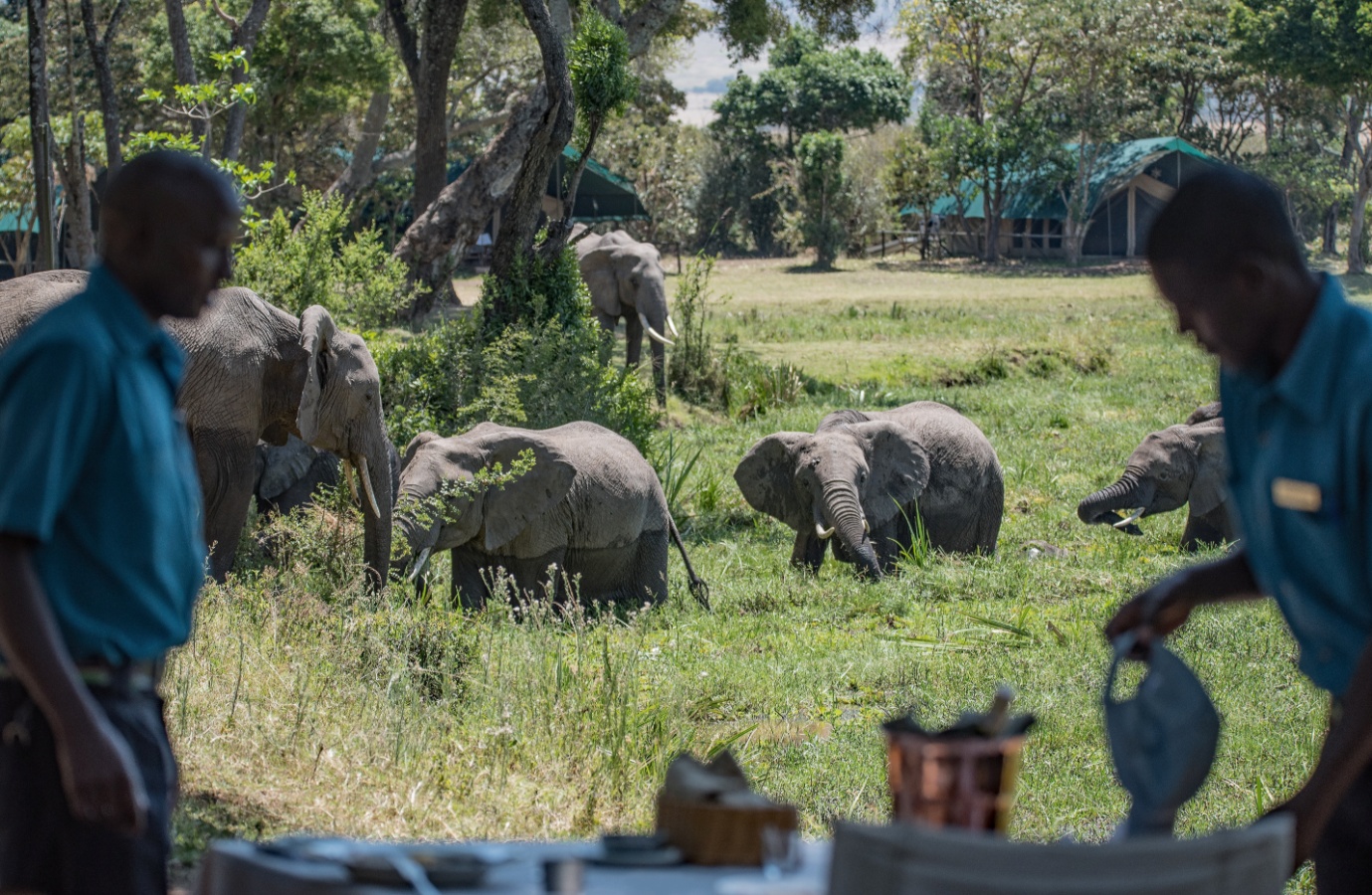
Image 3.Part of the funding for national parks agencies around the world is brought in through ecotourism but many countries suffering from climate change do not benefit from tourism. Photo by David Clode.
If tourism is the main source of income in a locality, we need to ask why this is so and what the implications for people and the environment are. Is this specialisation the result of conservation policies limiting or prohibiting permanent human settlements and other economic activities? If so, who made this decision and who benefits from it? Did the local population have a voice or was it imposed by national governments, conservation organisations, local elites, tour operators, and international development agencies? Were conservation policies informed by the values and worldviews of the local population? Were human rights and land rights violated?
The creation and management of protected areas such as national parks are often inspired by a ‘fortress conservation’ approach which on the one hand limits what can be done and who can live within protected areas designated as ‘wilderness’, and on the other seeks to bring largely middle-class western tourists in contact with that ‘wild’ nature. 8 Fortress conservation is the dominant approach of conservation globally and has led to human rights violations. 9 According to a recent estimate, in the last three decades the expansion of the global network of protected areas has resulted in the eviction of more than 250,000 people from their homes and lands. 10

Image 4. Sustainable agriculture in a forested area in Guinea. Photo by Joe Saade – UN Women CC BY-NC-ND- 2.0
There are, however, rights-based biodiversity conservation approaches inspired by principles of equity and environmental justice which promote structural transformation of the economy aimed at greater resilience in the face of economic and ecological uncertainties. 11 Flying-dependent tourism from rich countries does not have to be the only economic option in biodiversity-rich areas.
This argument is accepted wisdom in the nature conservation movement and is used to promote greater access to the outdoors and nature reserves. It has, however, two key shortcomings. Firstly, research has shown that higher environmental awareness does not automatically lead to smaller ecological and carbon footprints. Educated, cosmopolitan, and environmentally aware segments of the population are often among the highest carbon emitters. 12 In Germany, Green Party supporters fly more frequently than supporters of any other party 13, and research in the UK and the USA shows that conservationists have similar ecological and carbon footprints to medics and economists, two professions with lower environmental literacy. 14 Individuals with a green identity ‘intend to behave in an ecologically responsible way, but they typically emphasize actions that have relatively small ecological benefits’ such as recycling or using more efficient light bulbs. 15 Adopting a plant-based diet and flying less deliver larger ecological benefits but are often ignored or deemed too inconvenient. 16

Image 5. Tourists waiting to take photographs of orangutans during feeding time at Sepilok Orangutan Rehabilitation Centre, Sabah, Malaysia. Photo by Greg Girard/CIFOR CC BY-NC-ND- 2.0
Secondly, the idea that the lack of a connection with nature (the so-called ‘nature-deficit disorder’ 17 ) is at the root of the ecological and climate crises presumes that nature is an entity existing out there beyond the realm of human society. This dichotomy, however, is an invention of western culture, and asserting that we must reconnect with nature paradoxically reinforces the dichotomy that we are supposed to overcome. While bringing people to the outdoors is a laudable objective with proven physical and mental health benefits, environmental organisations also need to emphasise the idea of ‘nature’ as a web of life reaching out to our everyday activities and the systems that sustain them; nature is what we put on our plate for breakfast, what fuels our cars and planes, what heats our homes. Through our activities we are part of processes that regenerate that web of life or break it down. Taking selfies with penguins in Antarctica may still be celebrated by some people as a sign of commitment, but flying is the fastest way to destabilize the climate upon which we all depend, penguins included. 18
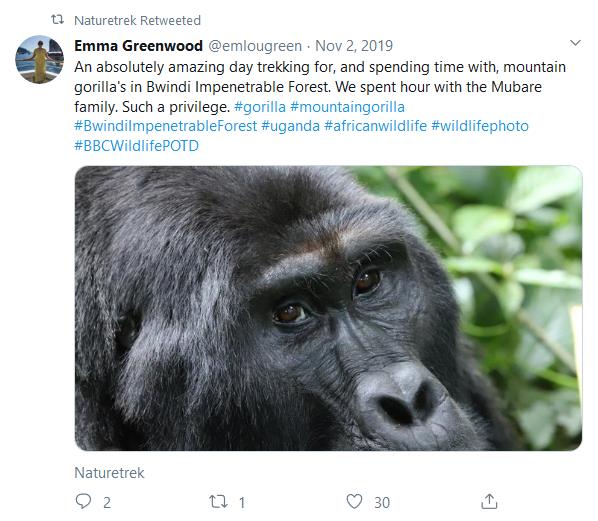
Image 6. Tweet about an encounter with gorillas.
There is no empirical evidence showing that frequent flying necessarily makes one more tolerant of cultural difference and more caring towards distant others. If this were the case, would we be implying that the 90% of the world’s population that has never been on a plane is less enlightened or less caring than the most affluent frequent flyers, amongst whom are that top 1% responsible for as much carbon emissions as the bottom 50%? Humanities and social science research shows that there have always been other paths towards cosmopolitanism than physical travelling, and this is especially the case now in the age of global media. In any case, the argument here is not against travelling but against high-carbon travel. In Europe it is possible to reach many culturally and ecologically diverse regions by train and other means of low-carbon travel.

Image 7. Young people often see ecotourism as a way of displaying a green, cosmopolitan identity. Photo by Louise Burton.
Whether the primary motivation to travel to exotic landscapes is a concern for distant others and the planet has been questioned by anthropologist Robert Fletcher. In his book about the cultural dimensions of ecotourism, Fletcher argues that ecotourists are primarily driven by a restless desire to accumulate sights and experiences. Young people in particular often engage in ecotourism as a way to project an image of themselves as ‘heroic, worldly, daring, and bold’ individuals. 19 »
This is not a convincing argument either. To mention just one problem: CO2 stays in the atmosphere for at least a hundred years while the trees bought or planted through an offsetting scheme may not be there next month, next year, or the next decade. Fires, changes in governments, political instability, poverty, corruption, revolutions, armed conflicts, migrations, ‘natural’ disasters – it is impossible to predict what will happen to a forest (let alone to the company selling the carbon credits) in the next hundred years, and there is little reason to believe that the coming decades are going to be any less troubled than the last century. 20 We need forest conservation, reforestation and potentially afforestation in addition to –not as a substitute for– urgent and drastic emission cuts. 21

Image 8. Forest regeneration in Cameroon. Photo by Ollivier Girard/CIFOR. CC BY-NC-ND- 2.0
Removing carbon from the atmosphere is a complicated process initially conceived of as a backup tool in case emissions are not curbed as early as needed and to deal with sectors difficult to decarbonise such as agriculture. Climate modellers, however, have incorporated NETs in their climate models as if they already existed and were capable of removing vast amounts of carbon. The reality is that these technologies exist at best as small pilot schemes and may never work at the required scale. The European Academies’ Science Advisory Council clearly noted in 2018 that ‘Negative emission technologies may have a useful role to play but, on the basis of current information, not at the levels required to compensate for inadequate mitigation measures. [...] We conclude that these technologies offer only limited realistic potential to remove carbon from the atmosphere and not at the scale envisaged in some climate scenarios.’ 22 The tentative potential of NETs is being used to undermine the requirement for immediate and widespread decarbonisation. An additional problem is that the deployment of BECCS would require land between three and five times the size of India which could be achieved only by reducing land available for natural habitats and food production.
Around one third of the greenhouse gas mitigation required between now and 2030 can be provided through ecological restoration, a set of processes known as Natural Climate Solutions. The widespread adoption of cost-effective natural negative emissions approaches such as reforestation and wetland regeneration along with stringent mitigation measures (including lifestyle change) can help deliver the Paris Agreement and reduce or even eliminate the need for BECCS. 23 The regeneration of natural landscapes is therefore vital for a stable climate but this is not a substitute for urgent and drastic emission cuts in line with climate science.
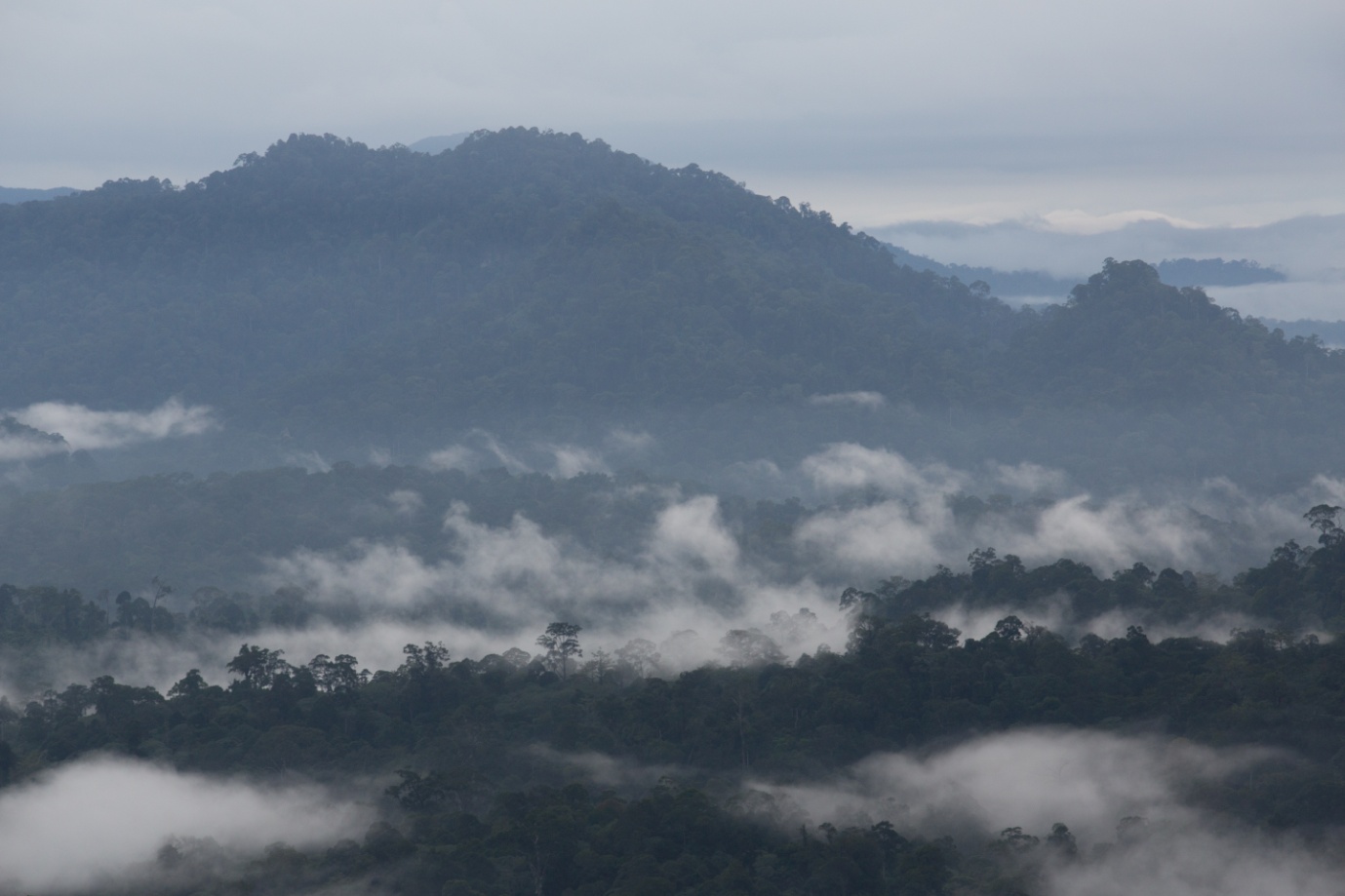
Image 9. Buying trees cannot be a substitute for cutting emissions. Rainforest in Sabah, Malaysia. Photo by Mokhamad Edliadi/CIFOR CC BY-NC-ND- 2.0
It is important to unpick the alleged merits of aviation in detail, one by one.
• ‘Aviation produces only 2% of carbon emissions while being a vital sector for international cooperation and economic development.’
According to the aviation industry carbon emissions from aviation are around 2-3%. However, the climate impact of aviation is greater because it emits other greenhouse gasses and because gasses emitted at higher altitudes have greater impact. Aviation contributes around 5% of human-induced warming and since demand is expected to double within two decades and there are no technologies in sight to make green flying a reality, it could consume up to 27% of the 1.5°C carbon budget by 2050. 24
• ‘Most flying is done by business people.’
This is incorrect. Globally business trips represent around 13% of international tourist arrivals. 25 Most flights are taken by an affluent minority for holidays.
• ‘Flying enabled the democratisation of travel and tourism.’
Aviation is far from being a democratic mode of transport, if by this we mean effectively available to all. Less than 5% of the world’s population fly in any given year and most flying is done for holidays by an even smaller population segment. In England, the top 10% of the most frequent flyers took more than half of all international flights in 2018. 26
• ‘If that’s the case, why should the emissions of a small number of people matter at all?’
It matters because this inequality weakens people’s willingness to act decisively to curb emissions. A carbon budget is a pie that we all have to share under a principle of equity but at the moment this is far from the case. The richest 10% of the world’s population is responsible for around 50% of global CO2 emissions and the richest 1% produces as much carbon as the bottom 50% 27

Graphic 1. Carbon inequality. Source: Oxfam.
Aviation tends to dominate the carbon footprint of frequent flyers and this is not likely to change in the coming decades. Considering planned fuel and operational efficiency gains, the climate impact of a return long-haul flight to South America, South Africa or Indonesia will still be in the range of 3 to 4 tonnes of CO2e by 2050. Yet globally annual emissions per capita for 1.5 degrees need to go down to 2.5 in 2030, 1.4 in 2040 and 0.7 in 2050. 28. To put things in perspective, annual emissions per capita in the EU are currently around 7 tonnes.
• ‘Electric planes and alternative fuels will make aviation a clean mode of transport.’
Synthetic electro-fuels (synthetic fuel produced through combining hydrogen with carbon from CO2) require large amounts of energy (equivalent to 28% of Europe’s total electricity generation in 2015 or 95% of the electricity currently generated using renewables in Europe) and will not be sufficient on their own to bring aviation emissions within safe limits. Biofuels require massive land use either on productive agricultural land or on land currently occupied by natural forests, threatening food supplies and farmers’ livelihoods, destroying valuable habitats, increasing greenhouse gases, and diverting support from other renewable energy sources. Despite claims by the aviation industry about rapid progress in decarbonising flying, alternative jet fuel made up just 0.002% of airline fuel use in 2018. 29
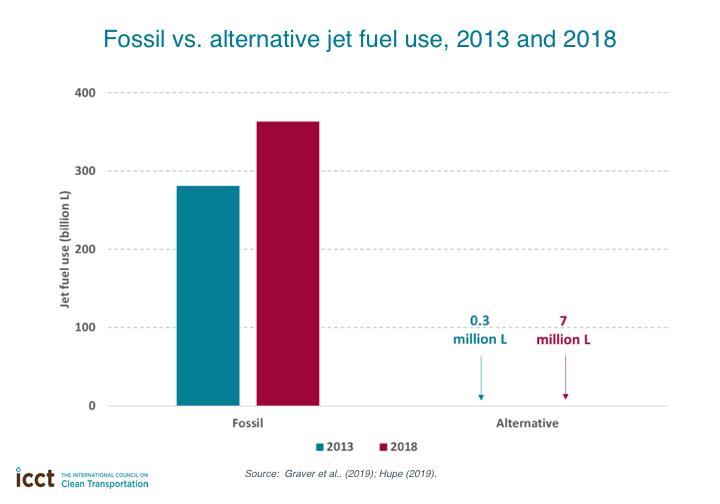
Graphic 2. Fossil vs. alternative jet fuel use, 2013 and 2018. Source International Council on Clean Transportation.
The aviation industry also heralds the immediate advent of electric planes but engineers acknowledge that the roadmap for developing this technology is a long one. Small electric planes for local and regional flights may operate within the next two decades, but there is no prospect yet for commercial short and long haul flights which in the UK are responsible for 87% of aviation emissions. 30 The potential of alternative fuels to decarbonise aviation is limited and commercial electric flights are still a distant dream.
• ‘Limiting aviation will take us back to the stone age.’
The assumptions underlying this statement are that speed is progress, that affluent westerners have the right to freely roam the world, and that less mobility means a retrenchment into reactionary identities. But the climate crisis has turned this statement on its head. If major planetary tipping points such as the melting of Greenland’s ice sheet or the dieback of the Amazon forest are crossed, it may be beyond human control to stop rising temperatures and the result of this would be the collapse of civilised life; a barbaric future of conflict around scarce resources. Although two decades ago tipping points were considered likely only if global warming exceeded 5 °C above pre-industrial levels, recent evidence suggests that tipping points could be exceeded by even between 1 and 2 °C of warming. 31 We are currently at 1 °C of warming.
Nature conservation organisations and prominent figures in the conservation movement acknowledge the climate crisis but usually remain silent about the scale of mitigation required to comply with the commitments of the Paris Agreement (keeping temperatures well below 2C and pursuing 1.5C). Staff members at conservation organisations privately admit that reasons for this silence include, firstly, the belief that the message from climate scientists would upset some members and supporters. Some conservation organisations prefer instead to sweeten the message by downplaying the severity of the situation. Secondly, complying with the Paris Agreement requires profound lifestyle changes and conservation organisations don’t want to be seen as telling people what to do. The most important reason, however, is the close links between the conservation movement, specialised wildlife media (e.g. wildlife and birdwatching magazines), and the ecotourism industry.
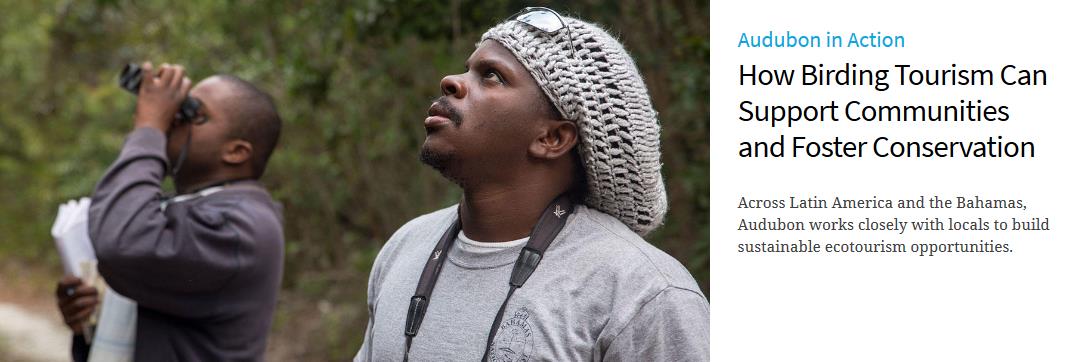
Image 10. Bird conservation organisations such as the Audubon Society in the USA support ecotourism as a conservation tool in developing countries.
Wildlife artists, journalists, and wildlife TV celebrities often work as tour guides or organise their own wildlife watching tours and some staff in conservation organisations also work part time as tour guides. Some individuals have built a reputation around their global travels and routinely showcase the number of places they have visited and the number of species they have seen as badges of honour. In this context attempts to initiate a conversation about the need to reduce wildlife enthusiasts’ and conservationists’ carbon footprints are usually met with silence. The paradox here is that the conservation movement routinely asks politicians to listen and act according to science but is now choosing to ignore the parts of that science that it finds inconvenient.
Ecotourism has been booming since around the same time as the International Panel on Climate Change issued its first report in 1990. These last three decades should have been the time when we successfully addressed the climate crisis. We had the time and knowledge to do it. Instead they became a time for climate inaction. Emissions have increased by 67% and are still rising (2.7% in 2018), partly to satisfy a demand to move ever more resources, goods and people around the world. International tourist arrivals have more than tripled from 435 million in 1990 to 1.4 billion in 2018. These years saw the shift from occasional to frequent flying and the rise of wasteful consumption amongst privileged segments of the world’s population. In only three decades we have used a third of the global carbon budget for 2°C and come to think of activities and lifestyles which are beyond planetary boundaries as normal.
We cannot afford another three decades of climate inaction. The remaining carbon budget is shrinking rapidly and at the current rate of emissions it will be consumed within 18 years. In OECD nations we need urgent and unprecedented changes at every level of our societies and economies to achieve the required mitigation rate of 10-15% per year. The tourist industry has to contribute its fair share. It won’t be a smooth process but delaying action is not going to make things any easier.
Am I then arguing that we should stop ecotourism altogether? No, I am not arguing that we should put an end to travel and tourism in natural areas. I am arguing that we should be agnostic rather than enthusiastic about ecotourism, especially if it involves high-carbon transport. The tourist industry needs to cut emissions in line with climate science and focus on domestic markets that require no flying or less flying. This is critical for the future of any tourist destination. With no technological breakthrough in sight to make aviation a clean mode of transport within a timeframe compatible with climate change targets, and with growing social pressure to curb demand (i.e. flying less and climate movements), it is in the interest of destinations to become less reliant on international tourists by focusing more on markets accessible by low-carbon transport and considering other land uses compatible with the preservation of nature. How to do this in a just manner should be the object of an open conversation about how places, companies and organisations that rely on growing levels of flying can adapt to the realities of the climate emergency. Central to this conversation should be the question of how to share the carbon budget available for aviation equitably and what flying is deemed essential.
1 The International Ecotourism Society defines ecotourism as ‘responsible travel to natural areas that conserves the environment and improves the well-being of local people’ ( https://ecotourism.org/). The tourist industry routinely uses the term loosely to refer to a range of tourist activities in ‘natural’ areas. It is not surprising that reliable updated data on trends is lacking or not publicly available. National statistics at best only reflect flows to regions branded as ‘ecotourism’ destinations, and claims about the growth of ecotourism often rely on indirect indicators such as surveys conducted by the tourist industry on tourists’ values and motivations. Though these surveys can be useful there is little critical analysis of whether those values and motivations translate into greener behaviours.
2 There is a large and growing academic literature examining basic questions such as who controls local resources, who decides about tourism development, whose values and interests inform conservation policies, who benefits from tourism, how tourism revenue is distributed, and how tourism affects wildlife. Advocates of ecotourism often mention Madagascar as an example of the virtues of tourism to preserve biodiversity rich areas. The anthropology and political ecology of nature conservation tell a different story. See Conservation and Environmental Management in Madagascar, Corridors of Power: The Politics of Environmental Aid to Madagascar, Forest and Labour in Madagascar: From Colonial Concession to Global Biosphere. See also http://bit.ly/37X7EDh
3 https://go.nature.com/2IREpqa
5 See http://bit.ly/2obA36r . The long and recurrent droughts in Somaliland in the East of Africa and Guatemala, Honduras, Nicaragua and El Salvador in Central America illustrate the devastating effects of the climate crisis on livelihoods. http://bit.ly/2XCvAqY | http://bit.ly/2D7FYO1
6 https://go.nature.com/2lVpW4R
7 Part of this impact is the increase in food vulnerability. Keeping temperatures below 1.5 C would reduce the risk of simultaneous crop failure basic staples such as maize, wheat and soybean by 26%, 28% and 19% respectively. http://bit.ly/34DwMgJ
8 See the report by Victoria Tauli-Corpuz, United Nations Special Rapporteur on indigenous peoples. https://www.corneredbypas.com/
9 United Nations Special Rapporteur on indigenous peoples Victoria Tauli-Corpuz: ‘In the last 14 years, there has been only limited improvement in the recognition of human rights for the millions of Indigenous Peoples and local communities living in or near protected areas, despite commitments by governments and conservation organizations and compelling evidence of the positive and cost-effective conservation role of communities. Yet business-as-usual protected areas are proving insufficient to halt climate change and biodiversity loss.’
11 One of these approaches is called ‘convivial conservation’: ‘Convivial conservation (literally: ‘living with’) is a vision, a politics and a set of governance principles that realistically respond to the core pressures of our time. Drawing on a variety of perspectives in social theory and movements from around the globe, it proposes a post-capitalist approach to conservation that promotes equity, structural transformation and environmental justice. It directly targets the extreme capitalist interests of the global elites, positively engages with but transcends technocratic beliefs of pragmatists and enthusiastically builds on a growing groundswell of global social movements, including Extinction Rebellion and FridaysForFuture youth protests that demand structural change.’ See: https://conviva-research.com/the-case-for-convivial-conservation/
12 https://www.mdpi.com/2071-1050/11/22/6340
14 https://www.sciencedirect.com/science/article/abs/pii/S000632071730071X
15 https://journals.sagepub.com/doi/abs/10.1177/0013916517710685?journalCode=eaba
16 There are differences between countries. In Sweden, for example, the flying less movement has slowed down demand growth ( http://bit.ly/2KoxQ19) and in the UK vegan and plant based diets are becoming mainstream ( http://bit.ly/38UCM68).
17 Despite the name ‘nature-deficit disorder’ is not a medical condition.
18 Scientists have estimated a loss of 3 cubic metres of sea-ice area per metric ton of CO2 emission. https://science.sciencemag.org/content/354/6313/747
19 Anthropologist Robert Fletcher argues that while tourists justify their travels as an act of resistance to modern social life, ‘ecotourism is directly informed by a variety of beliefs, values, and self-perceptions largely peculiar to the white western upper-middle class individuals who dominate its practice and thus is inscribed within the mainstream sociaocultural structure of modernity itself’. Quoting Horkheimer and Adorno in their critique of the culture industry in general, Fletcher argues that ‘ecotourism may signify ‘not, as it is asserted, flight from a wretched reality, but from the last remaining thought of resistance ‘to the root cause of one’s discontent.’Robert Fletcher, Romancing the Wild. Cultural Dimensions of Ecotourism , Duke University Press, 2014.
20 See these articles by investigative journalist Lisa Song for further information about the other problems of offsetting. http://bit.ly/2JFzhpw http://bit.ly/2ObOeTw
21 Doug Parr, Greenpeace UK's chief scientist, argues that ‘There's no climate leadership in asking someone else to pollute less or plant more trees so you can carry on as before. We're in a climate emergency and mass tree-planting needs to happen alongside reducing emissions from aviation, not as a way to get around it.’ Mike Clarke, former CEO of the Royal Society for the Preservation of Birds (Europe’s largest bird conservation organisation) is one of the few voices in the UK’s conservation movement who have raised concerns about this issue: ‘With perhaps over a fifth of the world’s bird species list at risk from climate change, aviation is potentially set to consume more than half the UK’s carbon budget by 2050. Increasingly, habitat restoration to capture carbon will be needed to reduce the total amount of greenhouse gases, not to offset emissions’ (British Birds 2019 p.700). Considering the current growth of aviation the only effective way to reduce emissions is to manage demand through, for example, carbon taxes and a frequent flyers levy. See campaign by Freeride http://afreeride.org/ . For a good review of the debate around the Frequent Flyers Levy see: https://stay-grounded.org/wp-content/uploads/2019/04/progressive-ticket-tax-frequent-flyer-levy.pdf
22 https://easac.eu/publications/details/easac-net/
23 https://www.pnas.org/content/114/44/11645
25 UNWTO http://bit.ly/2Ui0mpD. The percentage of business flying in the UK represents around 13% of international flights by British citizens. Passenger Survey Report 2018 : http://bit.ly/2Se2ZpB
Movement is the crossing of space by people, objects, capital, ideas and other information. It is either oriented, and therefore occurs between an origin and one or more destinations, or it is more akin to the idea of simply wandering, with no real origin or destination.
En savoir plus xA lifestyle is a composition of daily activities and experiences that give sense and meaning to the life of a person or a group in time and space.
En savoir plus xFor the Mobile Lives Forum, mobility is understood as the process of how individuals travel across distances in order to deploy through time and space the activities that make up their lifestyles. These travel practices are embedded in socio-technical systems, produced by transport and communication industries and techniques, and by normative discourses on these practices, with considerable social, environmental and spatial impacts.
En savoir plus xPolicies